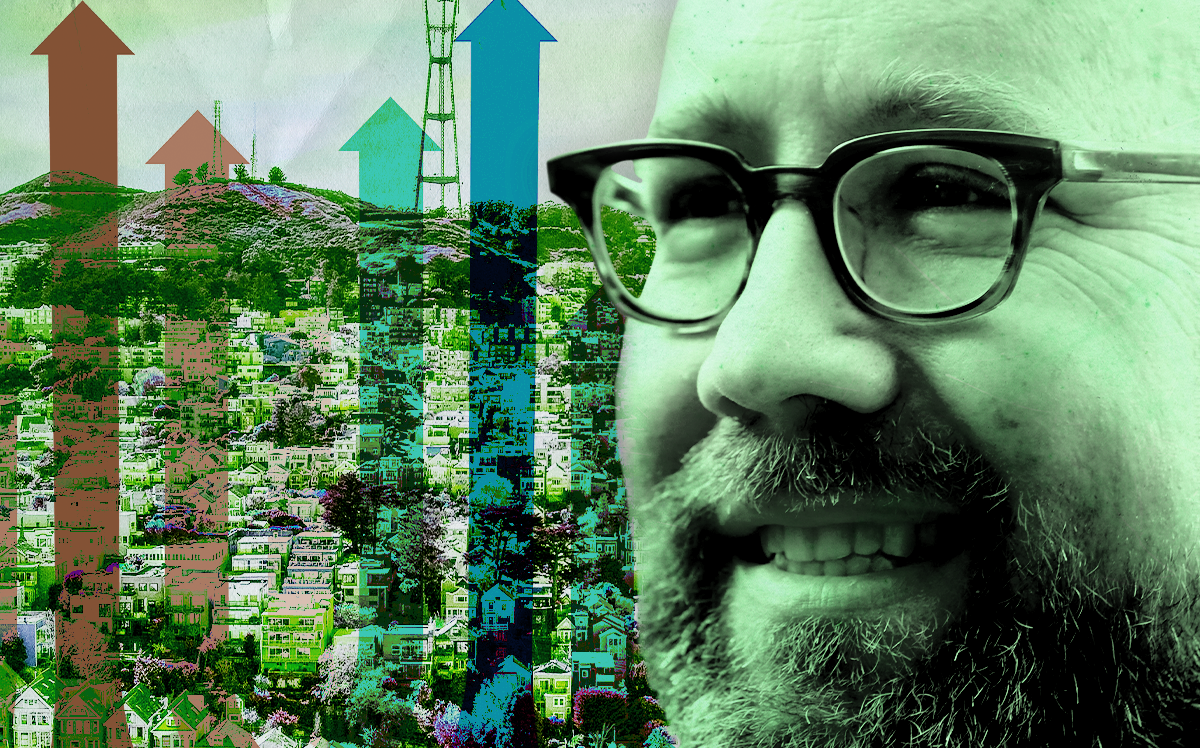 Voting down housing doesn’t make me “anti-housing,” say SF Supes
Voting down housing doesn’t make me “anti-housing,” say SF Supes
Trending
“Fourplexes everywhere”: San Francisco citywide upzoning advances
Planning Commission approves measure to add housing in 60% of the city

After four hours of impassioned debate Thursday, the San Francisco Planning Commission unanimously approved legislation designed to increase density and keep the state from deciding the future of infill housing in the city.
Months before the state passed its own infill initiative in September, Supervisor Rafael Mandelman had sponsored two pieces of legislation which, together, would allow up to four units on lots now zoned for one-, two- and three-family homes.
About 60 percent of the city’s residential areas are zoned for single- and two-family homes, largely in the western half of the city. That has helped make home prices among the most expensive in the nation and channeled almost 90 percent of residential construction in the past 15 years to the east side.
The state legislation, known as SB 9, which takes effect Jan. 1, spurred planning commissioners to advance the local ordinances to the Board of Supervisors, where they may have more of an uphill battle.
At the start of Thursday’s meeting, Jacob Bintliff, Mandelman’s legislative aide, explained to the commissioners that they needed to act before SB 9 dictated the future of San Francisco’s single-family lots. By upzoning them, the ordinances would take them out of SB 9’s purview, which is single-family zoning.
The problem with the state bill is not the greater density but the design of homes and blocks that it will allow, he said.
Read more
 Voting down housing doesn’t make me “anti-housing,” say SF Supes
Voting down housing doesn’t make me “anti-housing,” say SF Supes
 California mulls probe as Twitter war erupts on SF’s rejection of Build project
California mulls probe as Twitter war erupts on SF’s rejection of Build project
Shortly before the vote, Bintliff said via email that SB 9 represents “a serious threat to San Francisco’s longstanding development pattern of housing facing the street with mid-block open space in the interior of the block.” The state law allows the subdivision of single-family lots and requires a quick approval process without additional design or environmental review represented.
“The supervisor believes that adequate open space is critical to supporting livability, especially as we allow for more density in our residential neighborhoods,” he said.
Planning Department staff agreed and also pushed for a decision Thursday. While it recommended some changes to the legislation, such as allowing six units on corners and a three-year owner-occupancy requirement, it said that these recommendations could be incorporated into the final version that goes to the board and did not require a continuance.
“This increase in density is no longer a choice, it’s here,” said senior legislative planner Audrey Merlone, adding that Mandelman’s ordinances keep the “most beneficial aspects of SB 9 while still allowing the city to maintain control over the shaping of its urban form.”
The commissioners agreed, sending the legislation on to an uncertain future at the Board of Supervisors, but not before several hours of impassioned public comment that ran well into the night. Some critics of the legislation said it would make wealthy homeowners’ property more valuable without requiring affordability in the extra units they could add.
Some supported Supervisor Gordon Mar’s competing legislation, introduced just days before the vote, requiring that units added through upzoning be affordable to households earning less than the area median income and contain at least two bedrooms.
Supervisor Shamman Walton, who represents the Bayview, had expressed concerns that earlier versions of the ordinances would push more Black people out of the city. Those concerns were echoed at Thursday’s meeting. “It’s a recipe for gentrification and speculation,” said one commenter.
Mandelman takes the gentrification argument very seriously, his aide Bintliff said, but he feels that Planning Department additions such as protections for renters of single-family homes and making the zoning waiver applicable for owner-users, not flippers, “address the legitimate concern about potential displacement of existing tenants or increased pressure on homeowners in communities of color to sell rather than benefit from the program to build intergenerational wealth.”
The vast majority of the 75 speakers supported the legislation, despite their concerns that it did not go far enough to address the city’s “harrowing” housing market and “Kafka-esque” review process. Some supported the legislation while also expressing displeasure that it was “precision-designed to subvert SB 9.”
Laura Foote, executive director of pro-housing group YIMBY Action, said that while she appreciated the “very San Francisco way of doing things” on display at the hearing, which she defined as “arguing about everything,” the city had a rude awakening ahead if such a modest zoning change created this level of disagreement.
“”For those who are worried about fourplexes, I want you to get excited about what we’re going to be debating about during the Housing Element process,” she said, alluding to the all-encompassing housing plan that will begin taking shape in 2022 and decide the city’s housing policies for the next eight years.
Mandelman’s aide said the supervisor sees “a path to consensus at the full board,” starting with a Land Use and Transportation Committee hearing in January. But pro-housing advocates aren’t so sure.
“We are strongly supportive of fourplexes everywhere,” said Housing Action Coalition executive director Todd David. “Our top concern for this piece of legislation is that you have to count to six votes at the Board of Supervisors…We could count to five votes with some work. The question is, where does the sixth come from?”
David thinks the upzoning stands a better chance than it did a month ago, given the vitriol directed at the eight supervisors, including Mandleman, who voted against a 500-unit apartment building last month. He said the way some supervisors have been defending their votes indicates they realize their need to make a definitively pro-housing move, and “No one’s going to stand up and say, ‘We made a political mistake.’ But their actions clearly demonstrate that they understand that they did,” he said.
David said Mar’s competing legislation was “bizarro” and stands no chance, despite the support some voiced for it at the meeting. The below-market requirements are so restrictive that the density bonus would never be used, he said, making it the perfect example of the current politics surrounding San Francisco housing policy.
“They verbally say, ‘Hey, I’m pro-housing,’ but then put forward legislation that they know will not get built,” he said.
Mar’s office did not reply to a request for comment.




